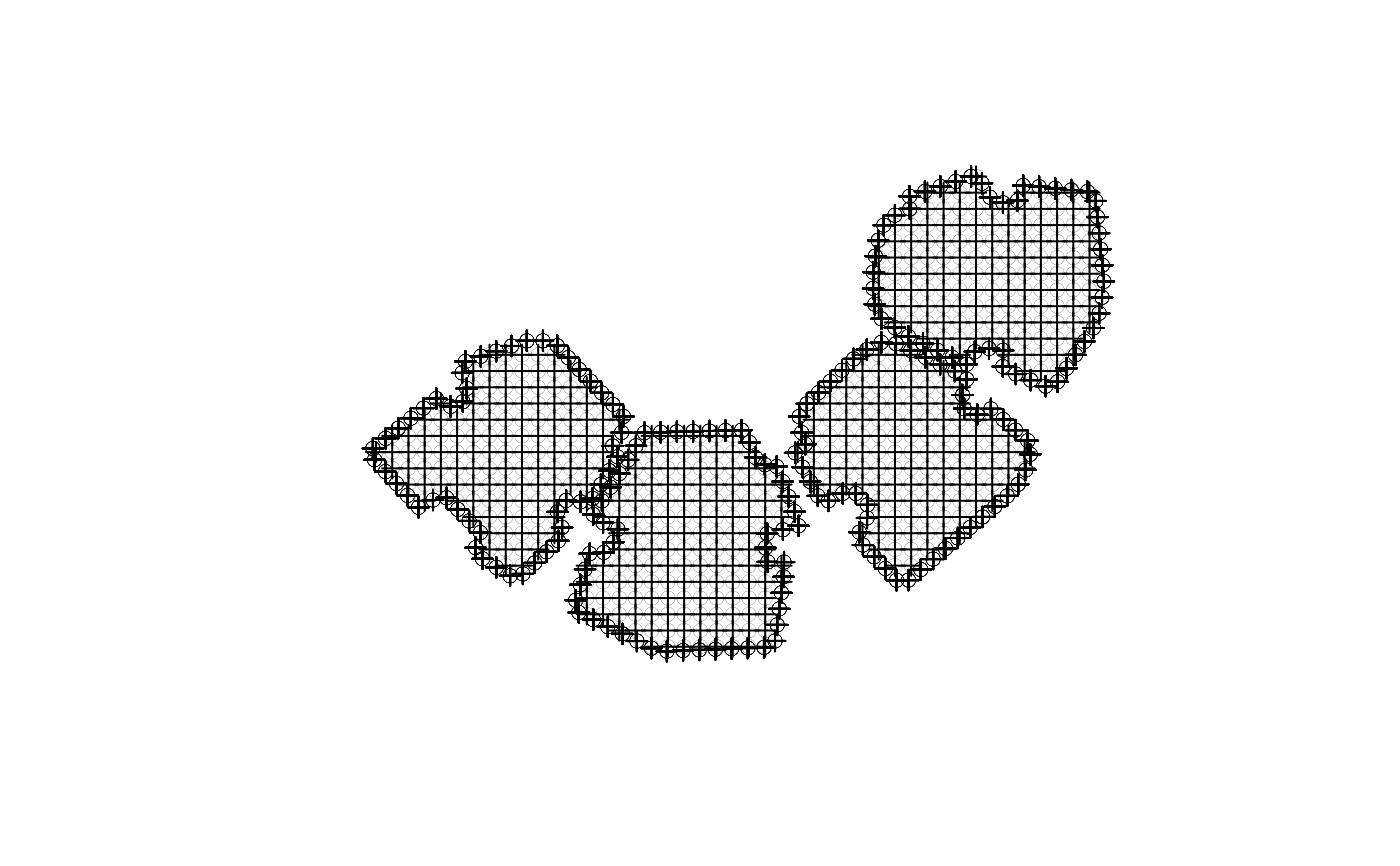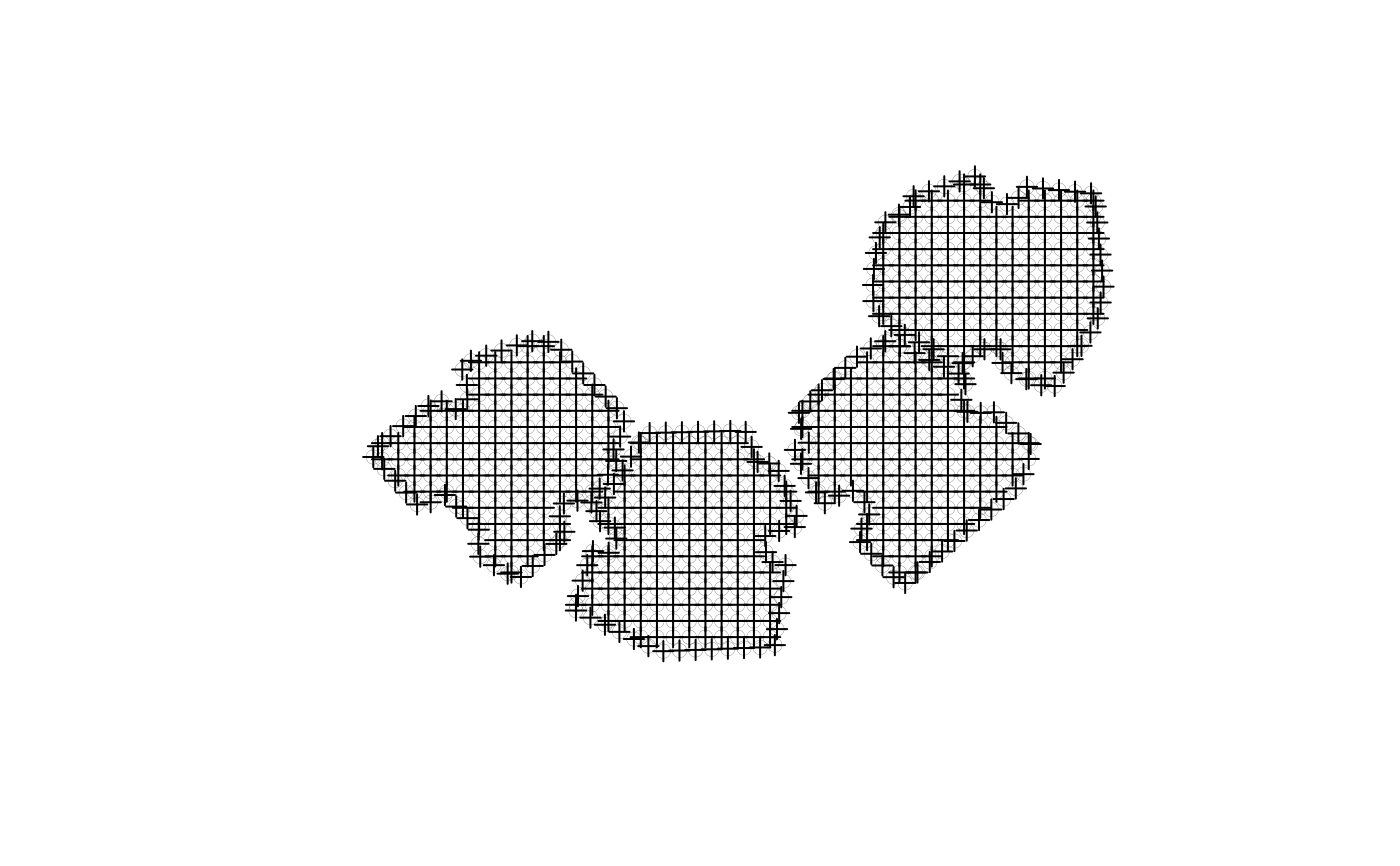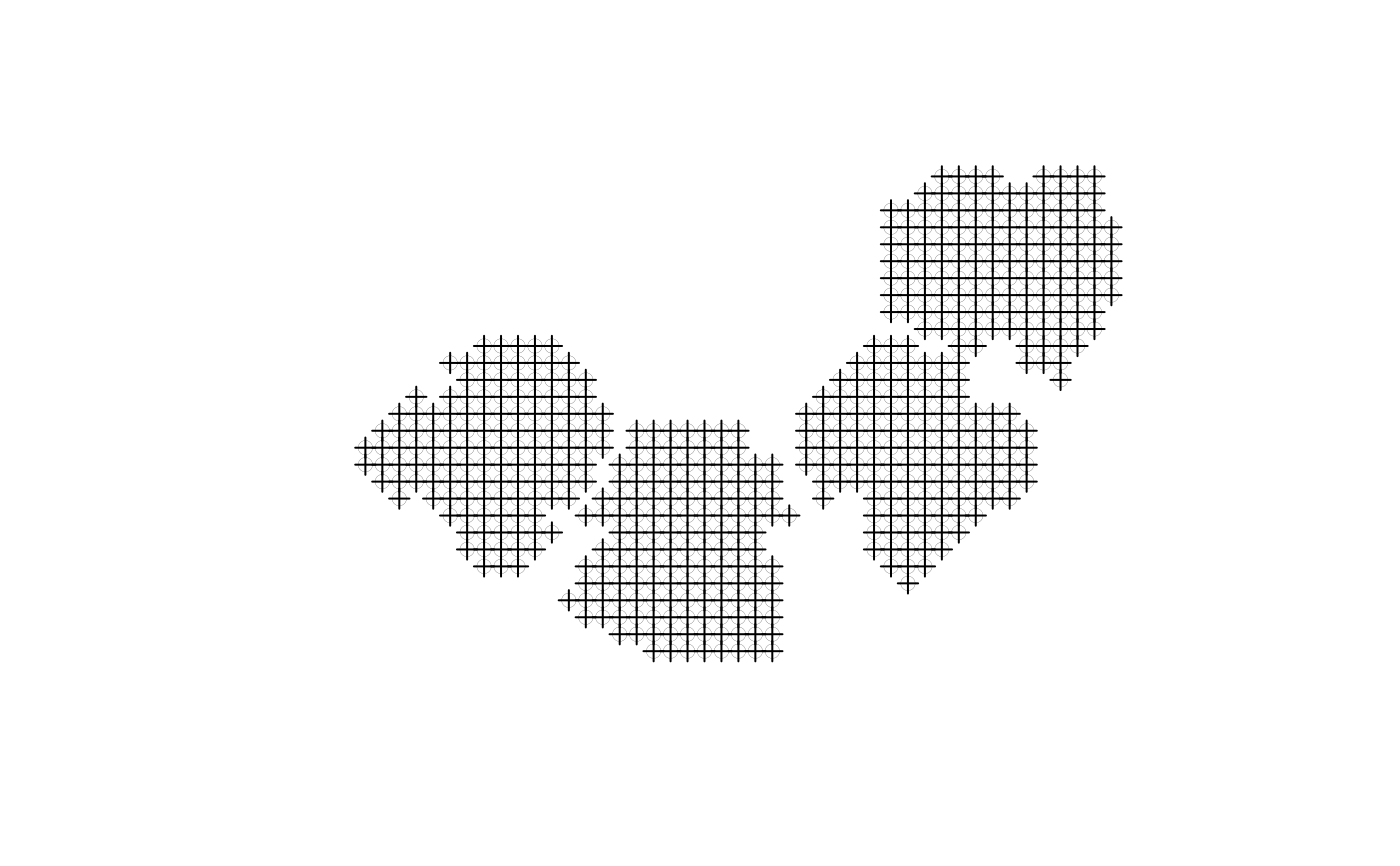Create grid of 3D points covering the 'facades' and 'roofs' of obstacles
Source:R/surfaceGrid.R
surfaceGrid.RdThe function creates a grid of 3D points covering the given obstacles at specified resolution. Such a grid can later on be used to quantify the shaded / non-shaded proportion of the obstacles surface area.
surfaceGrid(obstacles, obstacles_height_field, res, offset = 0.01)
Arguments
| obstacles | A |
|---|---|
| obstacles_height_field | Name of attribute in |
| res | Required grid resolution, in CRS units |
| offset | Offset between grid points and facade (horizontal distance) or between grid points and roof (vertical distance). |
Value
A 3D SpatialPointsDataFrame layer, including all attributes of the original obstacles each surface point corresponds to, followed by six new attributes:
obs_idUnique consecutive ID for each feature inobstaclestypeEither"facade"or"roof"seg_idUnique consecutive ID for each facade segment (only for 'facade' points)xy_idUnique consecutive ID for each ground location (only for 'facade' points)facade_azThe azimuth of the corresponding facade, in decimal degrees (only for 'facade' points)
Note
The reason for introducing an offset is to avoid ambiguity as for whether the grid points are "inside" or "outside" of the obstacle. With an offset all grid points are "outside" of the building and thus not intersecting it. offset should be given in CRS units; default is 0.01.
See also
Function plotGrid to visualize grid.
Examples
# When 'res/2' is larger then height, facade will be left unsampled build_small = build build_small$BLDG_HT = 1 grid = surfaceGrid( obstacles = build_small, obstacles_height_field = "BLDG_HT", res = 2 ) plot(grid)#> #> facade roof #> 201 526grid = surfaceGrid( obstacles = build_small, obstacles_height_field = "BLDG_HT", res = 2.00001 # res/2 > h ) plot(grid)#> #> roof #> 537# When input already contains 'obs_id', 'type', 'seg_id', 'xy_id', 'facade_az' or 'ZZZ' build2 = build build2$ZZZ = 1 grid = surfaceGrid( obstacles = build2, obstacles_height_field = "BLDG_HT", res = 2 )#> Warning: 'ZZZ' column removed from 'obstacles' since it is a reserved column name


